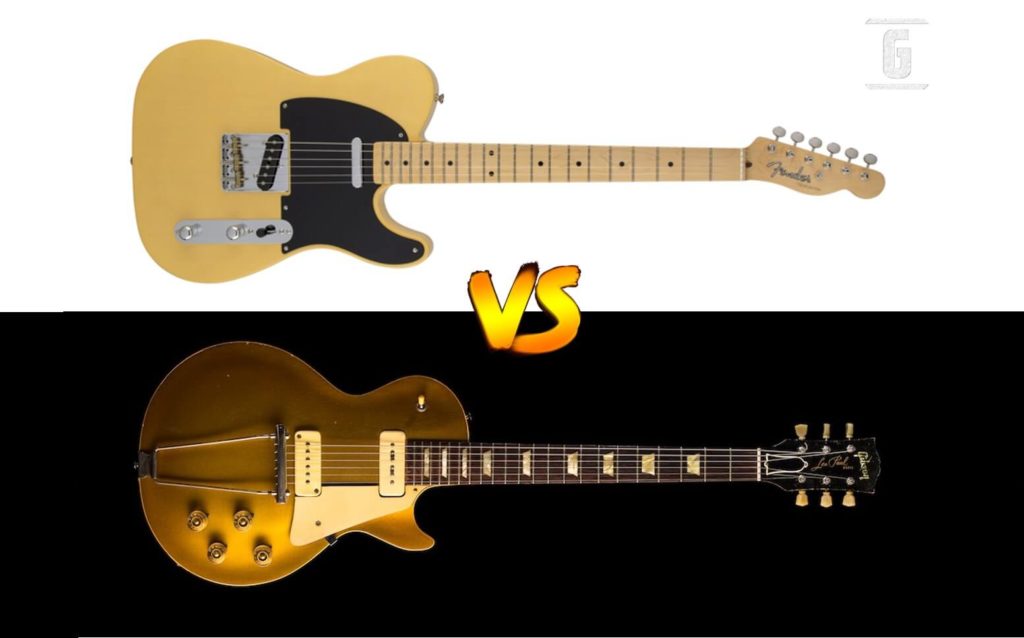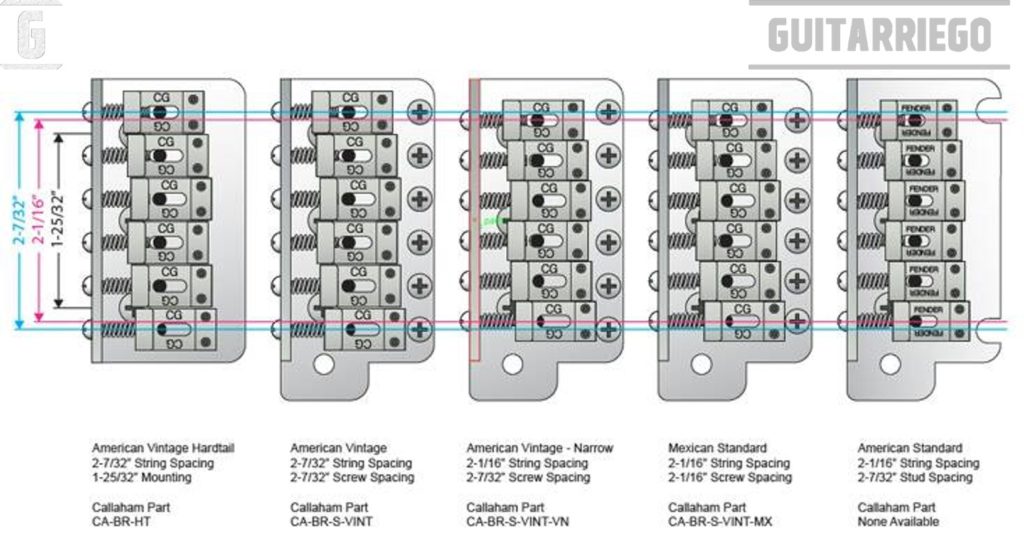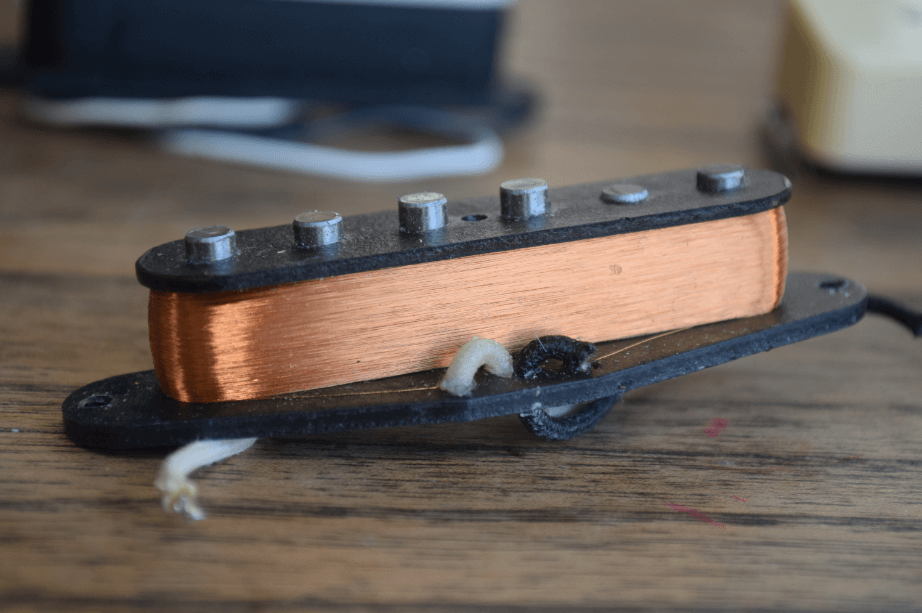Fender vs Gibson review: features, differences and secrets

Fender vs Gibson, Gibson vs Fender, the two most important guitar brands: characteristics, differences, secrets and more of two very different styles.
A historic rivalry: Fender vs. Gibson
Fender is known as the company that first mass-produced solid body electric guitars. Initially, however, Fender was an amplifier manufacturer, and Gibson had a long history of making stringed instruments, including Spanish type guitars.
In fact, around 1946, before Fender released its first guitar, the 1950 Esquire, Les Paul, a popular guitarist at the time, had come to Gibson with a proposal to make solid body electric guitars. Les Paul used to play with a solid body guitar called “the log” to avoid feedback. Thus, Gibson lost the opportunity to be the first manufacturer of solid body guitars because it was considered an absurd idea at the time.
Fender the pioneer of solid body guitars
Amp maker Leo Fender had been saved from bankruptcy before launching into making electric guitars that could be played with his amps. Thus, Leo, an inventor who was not a guitarist, with an instinct for business survival, began to mass-produce the instrument that would change the history of music forever, and especially that of Rock.
Do not miss this guide to the best years of manufacture of the Fender Stratocaster and the best years of manufacture of the Gibson Les Paul.

Gibson vs Fender: two opposing philosophies
Fender guitars were intended as a work tool: easy and cheap to make, with a focus on functionality. Instead, Gibson always had a more artistic and differentiation philosophy, in which the guitars were ornate, focused not only on their functionality, but also on their design and exclusivity.
Gibson always aimed to be an instrument of maximum excellence, with details such as bindings, carved tops, showy woods such as flamed maple and mahogany, block or mother-of-pearl trapezoids inlays, and black and gold colors, which gave it a differentiating status.
Fender was the “Henry Ford” of guitars. He pointed to functionality and the ability to manufacture in high volume at low cost. Thus, Fender guitars have the neck bolted to the body, unlike what the industry used to do back then, which was to glue -set in- the neck to the body. In this way, not only can a lot of manufacturing time and effort be saved, but parts can also be exchanged, either by choice or by need for repair. Also, the bodies are flat without bindings.
You may be interested in the evolution of the Gibson Les Paul and the characteristics of the Standard and Custom.
Characteristics of Fender and Gibson guitars
Woods used by Fender and Gibson

Fender guitars used one-piece maple necks until the late ’50s where they added a rosewood fingerboard. Gibson guitars primarily use mahogany necks with rosewood fingerboards. This is one of the most important differences between both brands. Maple is a hardwood with richer high-frequency audio, while mahogany is a softer wood characterized by rich mid-range tonal richness.
Fender bodies are primarily Alder, though they also use Ash to a lesser extent. Whereas the Gibson bodies are mahogany, just like their necks. Alder, like mahogany, is a softwood rich in mid frequencies. Mahogany is usually considered to have more low mids and alder with more high mids comparatively. In any case, it should be noted that the neck is considered the soul of the instrument. In other words, the neck is the part of the guitar that most influences its tone.
Neck and body joint: neckjoint
The joint of the neck and body in Fender guitars is bolt-on, which allows the body and neck to be interchanged to achieve the desired tone or simply to change a defective part. On the Gibson side, the necks are ste-in and glued to the body, as the industry has traditionally worked. This affects the way vibrations are transmitted throughout the instrument. Set-in is considered to give more sustain than bolt-on. However, the differences are often subtle and require a highly trained ear to hear them.
Fender and Gibson Scale
Fender uses 25.5 inches -64.77 cm- as the main scale, which is the distance between the nut and the bridge of the instrument. On the Gibson side, the main scale is 24.75 inches -62.865 centimeters-. That is, Gibson guitars scale is almost two centimeters shorter. This affects the tension of the strings, which is lower in Gibsons, so they have more sustain but less attack. On the contrary, Fender guitars, having more tension, have more attack and less sustain.
Do not miss this guide to the best years of manufacture of the Fender Telecaster and the best years of manufacture of the Gibson SG.
Fender and Gibson Fret and String Spacing and Fingerboard Radius
Guitar neck radius
Vintage Fender guitars have a 7.25″ radius which is more rounded. This is more comfortable for playing chords, but less practical for soloing and bending. The most modern Fender have a 9.5″ radius, it is a radius that is still quite rounded, but it is more friendly for solos and bending. In contrast, Gibson uses a flatter radius which is 12″. This one is very friendly for solos and bends, but not so comfortable for chords. However, most guitarists adapt well to all types of radio, although they may have a preference.
String spacing

Vintage Fender string spacing is 2-7/72 or 56mm between the first and sixth strings. Modern Fenders and Gibsons come with 1-25/32″ or 52.5mm pitch. The former are more similar to an acoustic instrument, handy for finger playing, arpeggios, while the closer distance is better for the traditional electric guitarist.
Guitar frets
Finally, Fender originally used small frets, which affect playability in terms of speed and bending. Over the years, Fender has implemented larger frets and these differences between Gibson and Fender have disappeared.
You can also visit our guide to the guitar frets: guide on wire sizes and materials and more.
Singlecoil Pickups vs. Humbucker Pickups
Another big difference between the tone of Fender and Gibson guitars is the pickups. Although initially both brands used singlecoil pickups, when Gibson used the P90. Starting in 1957, the PAF type humbucker designed by Seth Lover appears, which ends up defining the Gibbie tone. The humbucker is a double coil pickup that serves to cancel the hum and mimics the tone of the single coil. However, humbuckers are pickups with more body -mids frequencies-, more output and less brightness than single coils. The latter makes singlecoil pickups stand out more for clean tones; while the humbucker pickup design makes them stand out for more drive and saturation sounds.

Fender vs Gibson, two very different styles
From their beginnings, the objectives and philosophies of both companies were very different. As we said, while Gibson always looked for elegance and differentiation, Fender looked for pragmatism and value. Thus, we can see that Fender focuses on being a practical and cheap work tool for the musician; when Gibson seeks to be a unique instrument with distinctive details.
This difference is also found in tone. From the beginning, Fender wanted the same thing: clarity and definition in tone. Instead, from the start, Gibson sought warmth in the tone. In fact, Ted McCarty says that in the process of developing the Les Paul, they tried maple guitars, which were “too shrill, too much sustain” according to Gibson Director.
Tone of Fender vs Gibson guitars
Thus, we can define the Fender tone as a tone with attack, brightness, dynamics, definition and clarity. While the Gibson tone is warmer, with a predominance of mids frequencies, rounder and with sustain. For this reason, for rock sounds normally Gibson is better, but for cleaner sounds like pop, blues and funk the Fender are better. Of course it’s a matter of taste, and you can play any style with both brands of guitars.
Everything is relative, and thus many guitarists consider the most versatile combination, a Stratocaster type guitar with a Humbucker in the bridge. Or the same, in a Gibson with vintage PAF type pickups, which have fewer outputs and scooped audio in the mid frequencies, and thus more “Telecasterish” sounds are achieved.
You can share your thoughts on Fender and Gibson in the comments section.






